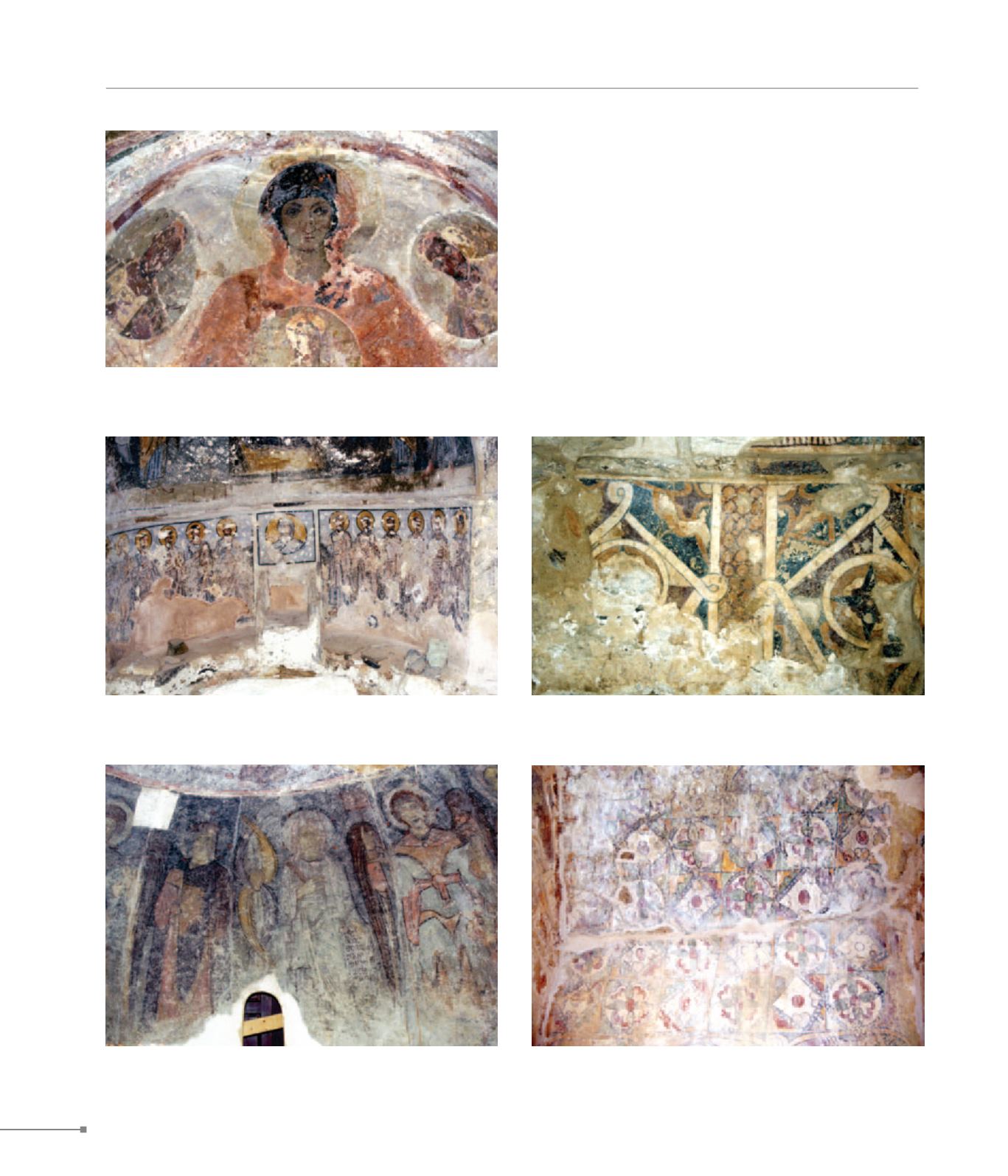
Naxos.
Naxos.
THE ISLANDS
368
589. Naxos, Sangri, Aghios Artemios, wall painting (Νάξος, Σαγκρί,
Άγιος Αρτέμιος, τοιχογραφία)
589. Naxos, Damarionas, Saint John Theologos at Adisarou, wall
painting (Νάξος, Δαμαριώνας, Άγιος Ιωάννης ο Θεολόγος στ’
Αδησαρού, τοιχογραφία)
589. Naxos, Chalki, Panagia Prototrone, wall painting (Νάξος, Χαλκί,
Παναγία Πρωτόθρονη, τοιχογραφία)
589. Naxos, Panagia Kaloritissa, wall painting (Νάξος, Παναγία η
Καλορίτισσα, τοιχογραφία)
589. Naxos, Moni, Panagia Drosiane, wall painting (Νάξος, Μονή,
Παναγία Δροσιανή, τοιχογραφία)
tected in churches dating from the first half of the 9th c. In a
better condition are the aniconic wall-paintings in the church-
es of Aghia Kyriake at Apeiranthos (24), Saint John at Adisa-
rou (15) and Aghios Artemios at Sangri (17).
Inland, Naxos was highly populated, as indicated by traces of
ruined settlements throughout the plain area. Kastro Apalirou
(14), at Sangri, towers over the inland plain. It is situated on
a steep hill of about 500 m and controlled not only the arable
land, but also the sea around Naxos, Paros and Ios. Cisterns
and remains of churches and houses within and outside the
defensive walls indicate a high level of residential activity. The
foundation of the castle is associated with the first Arab raids
in the 7th c., when the inhabitants of coastal areas were forced
to move inland for safety.


